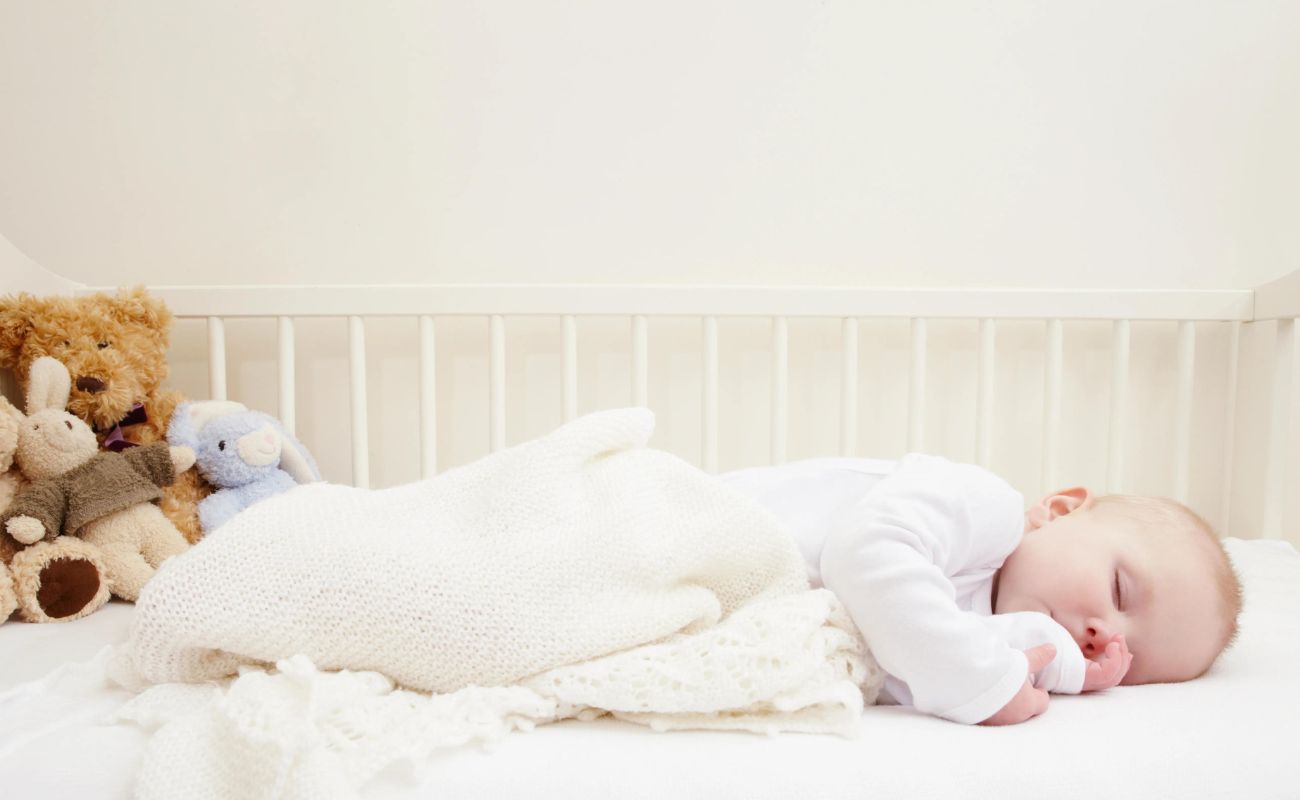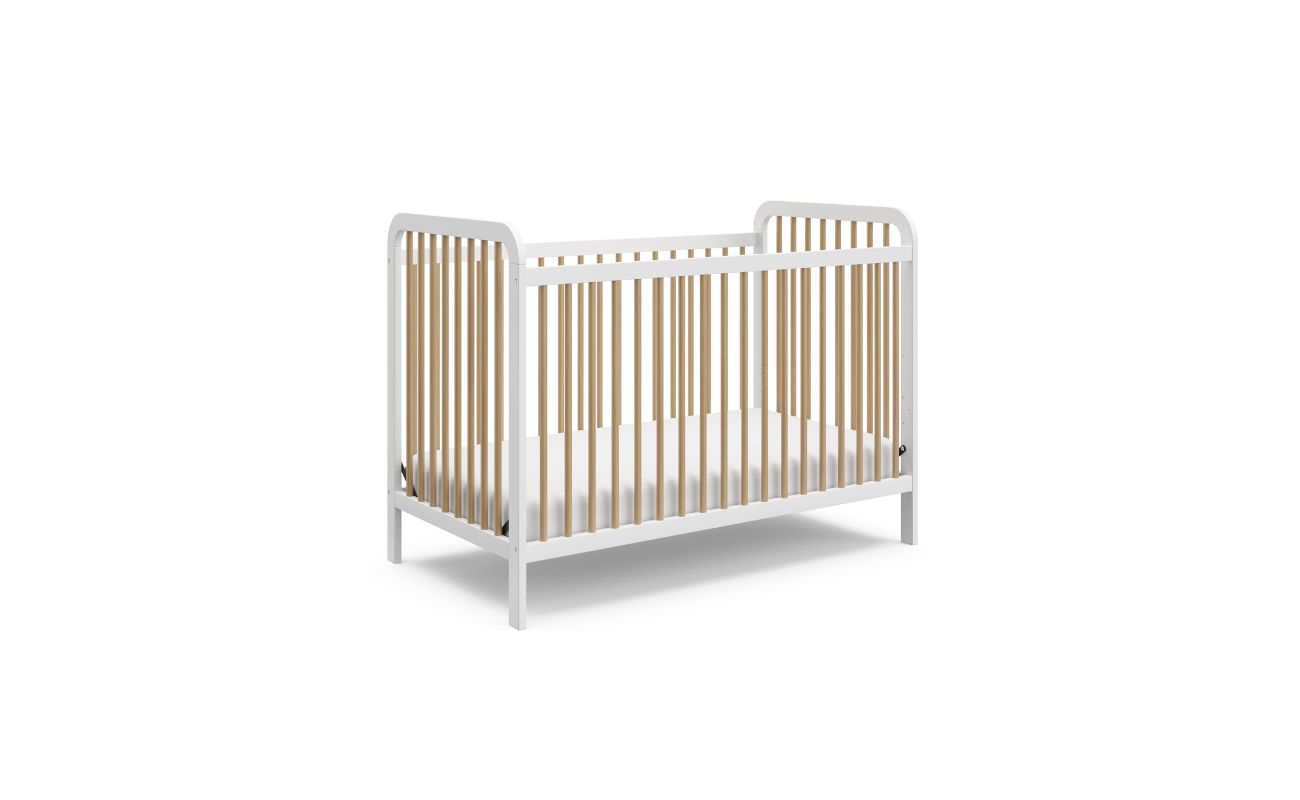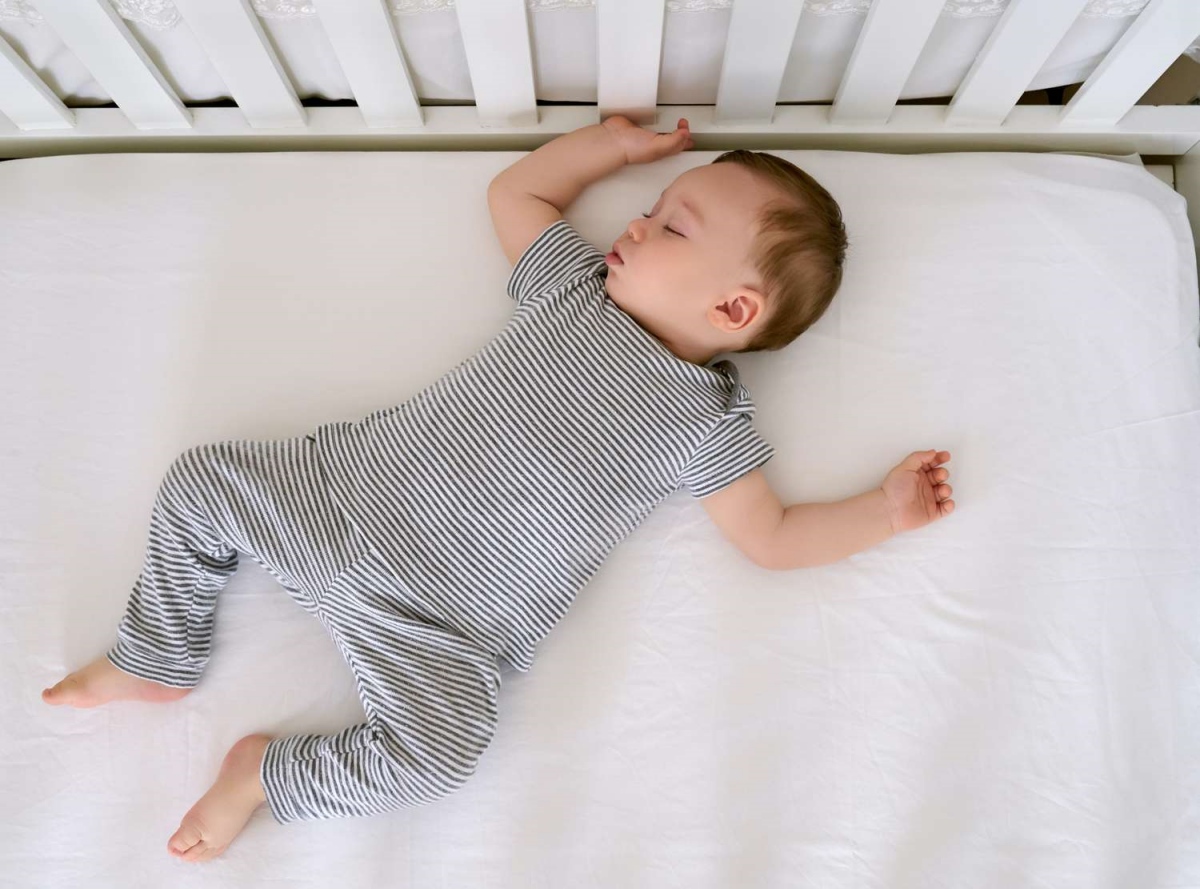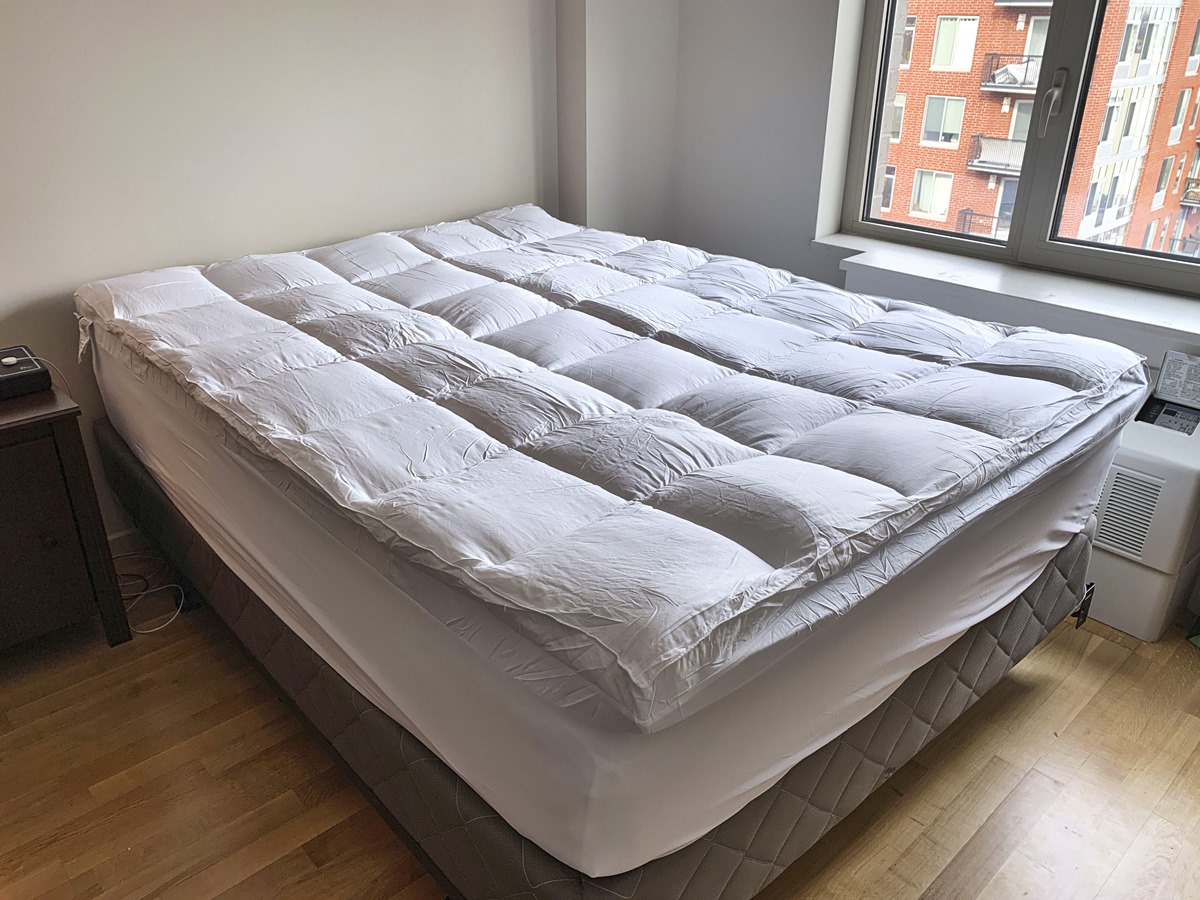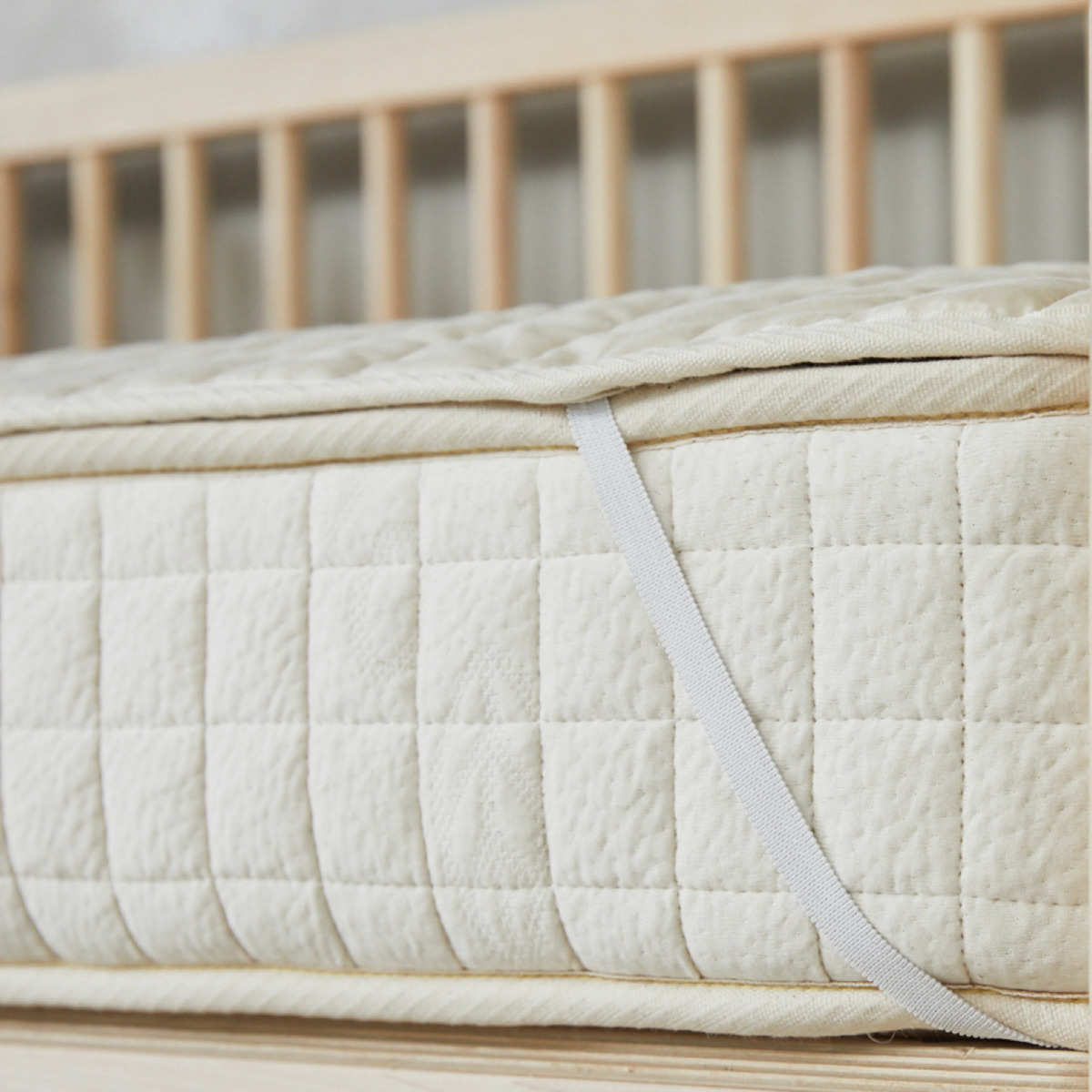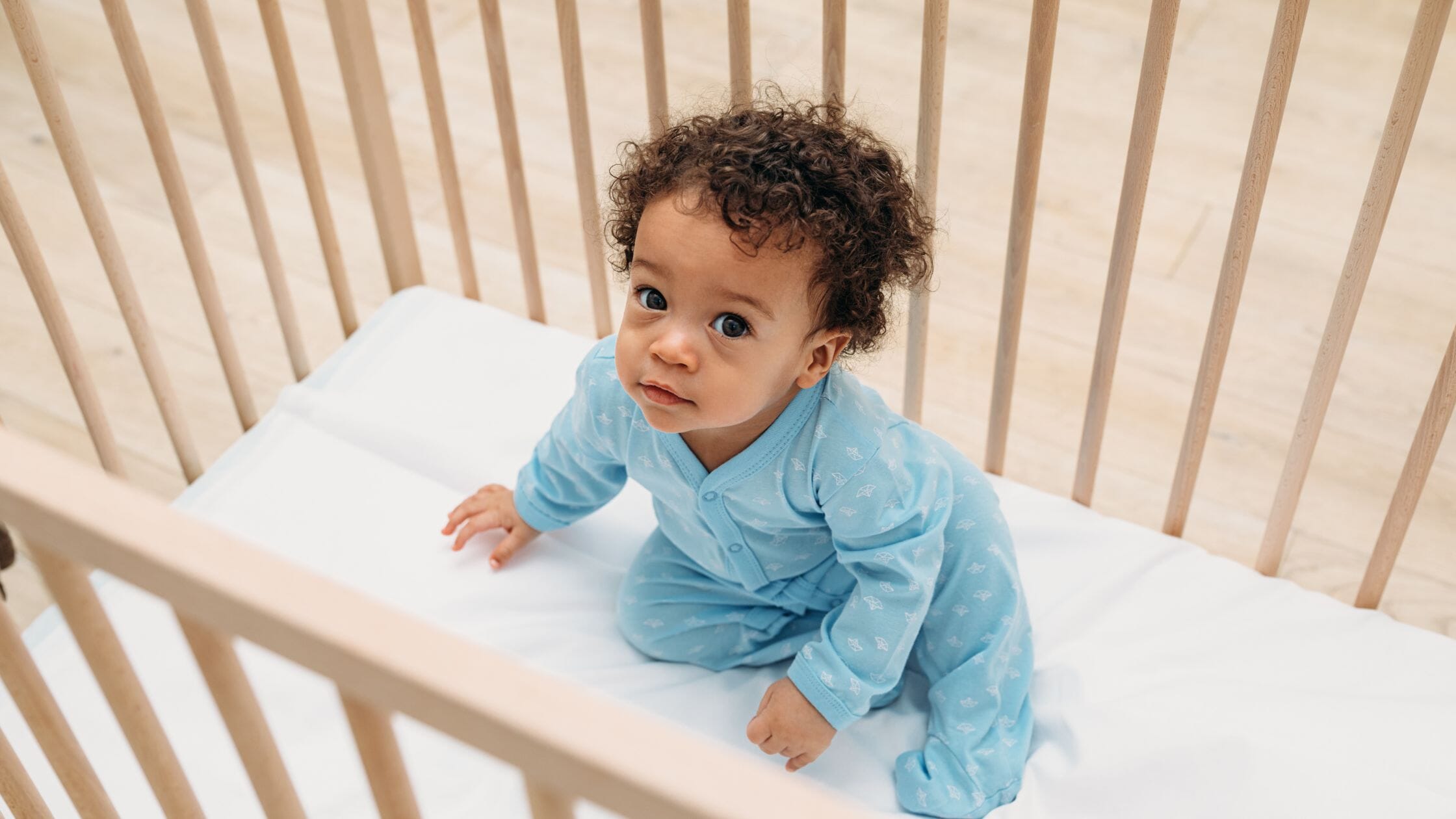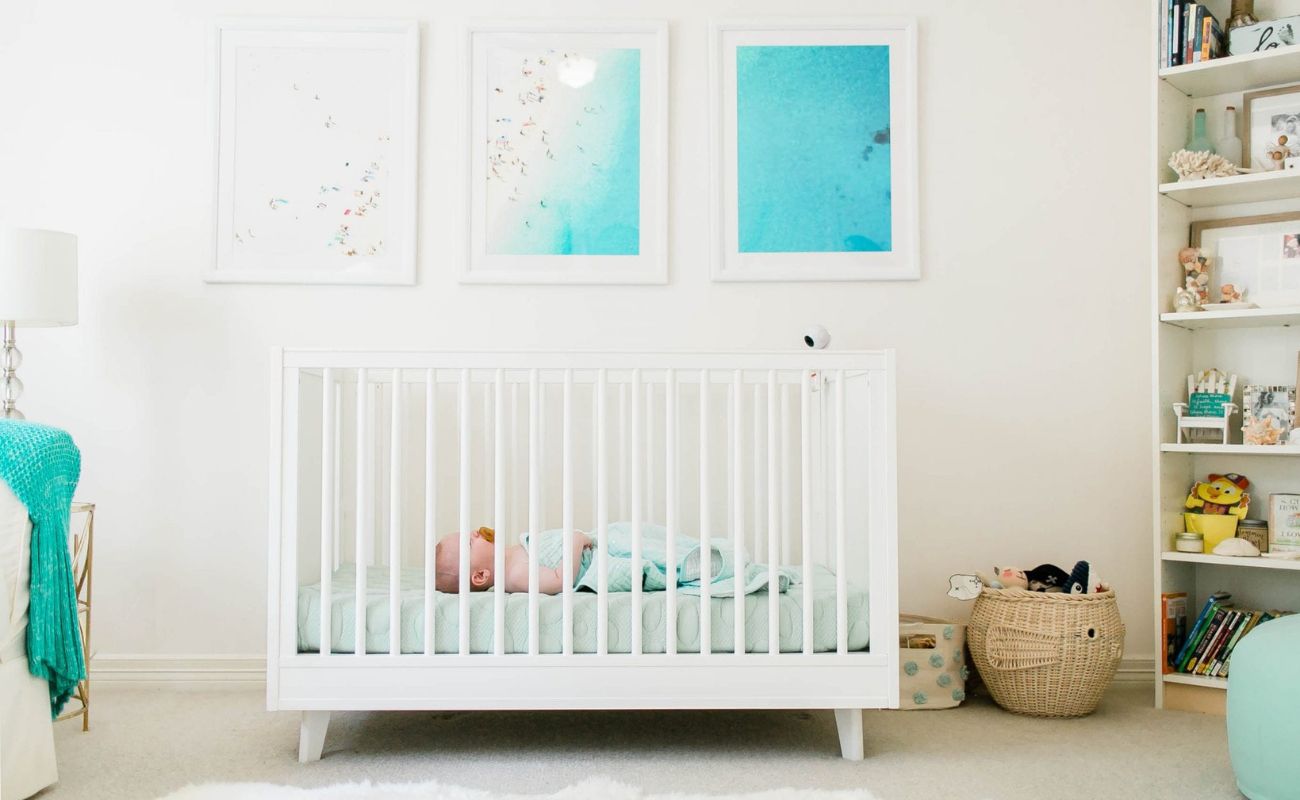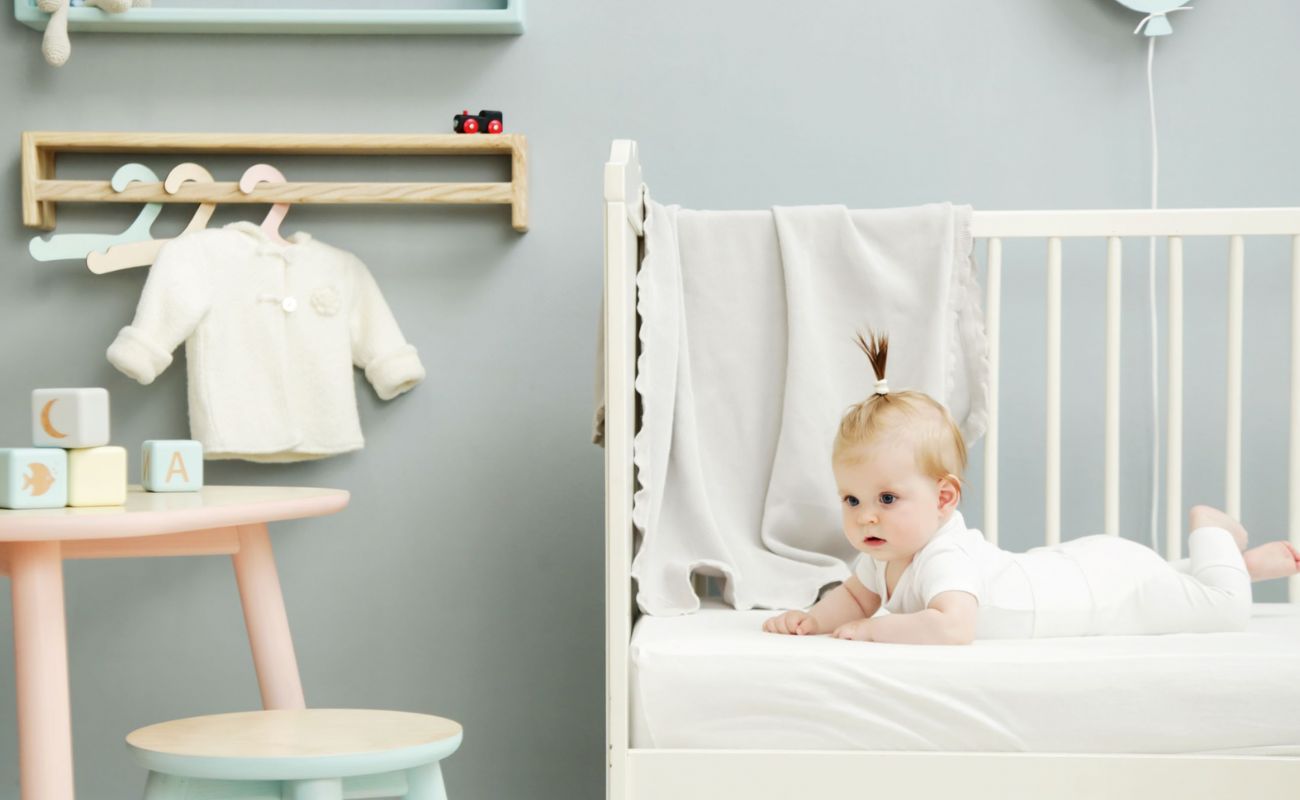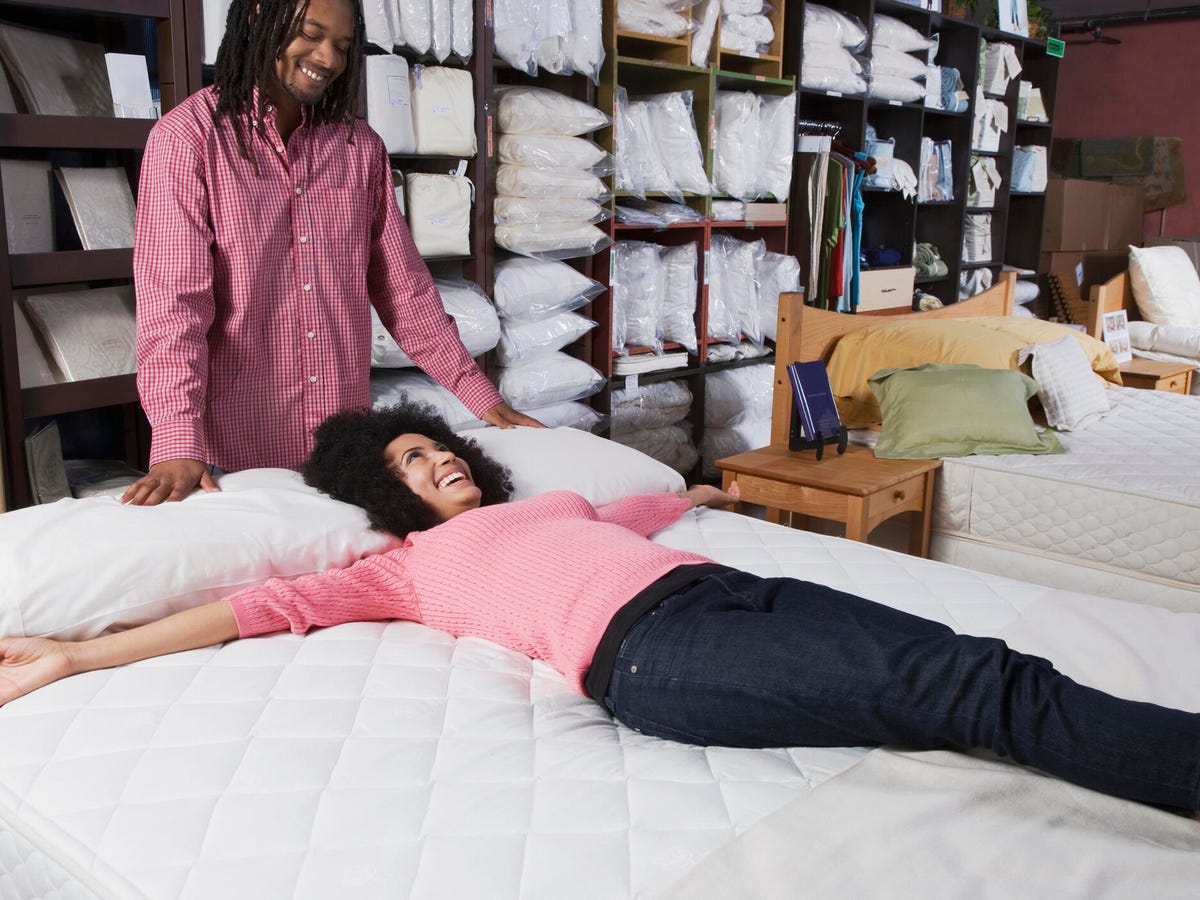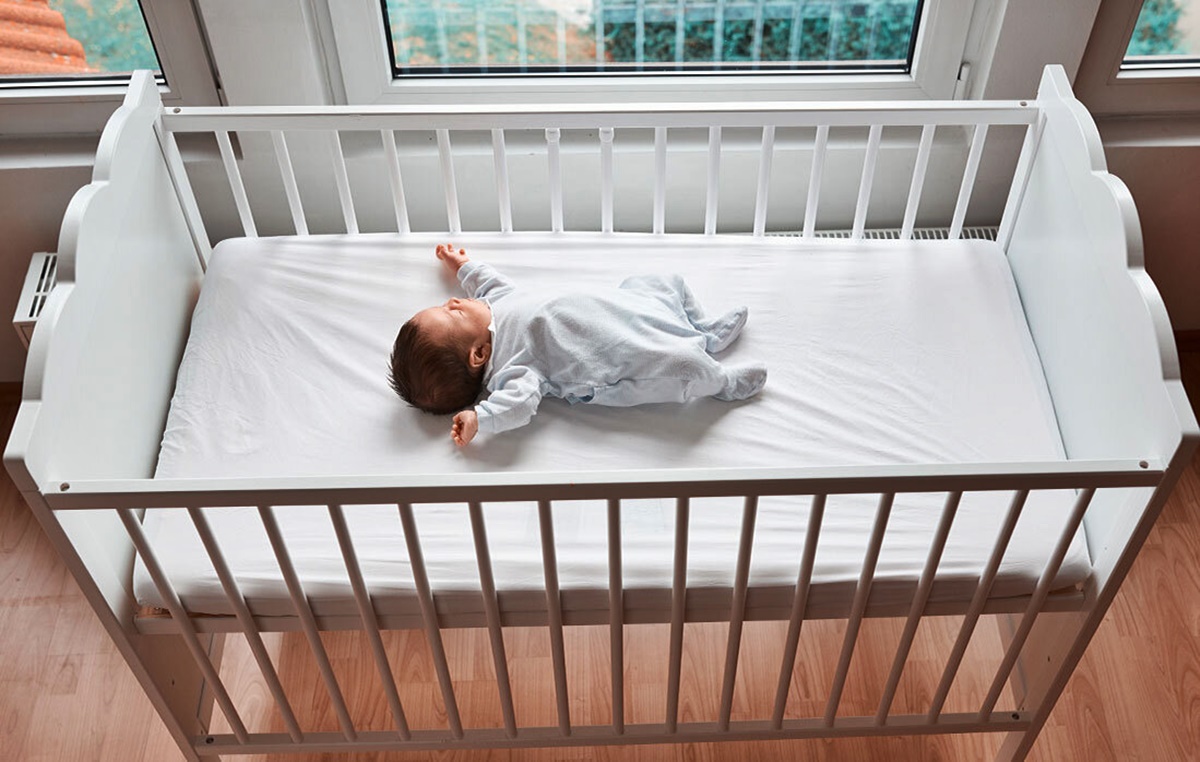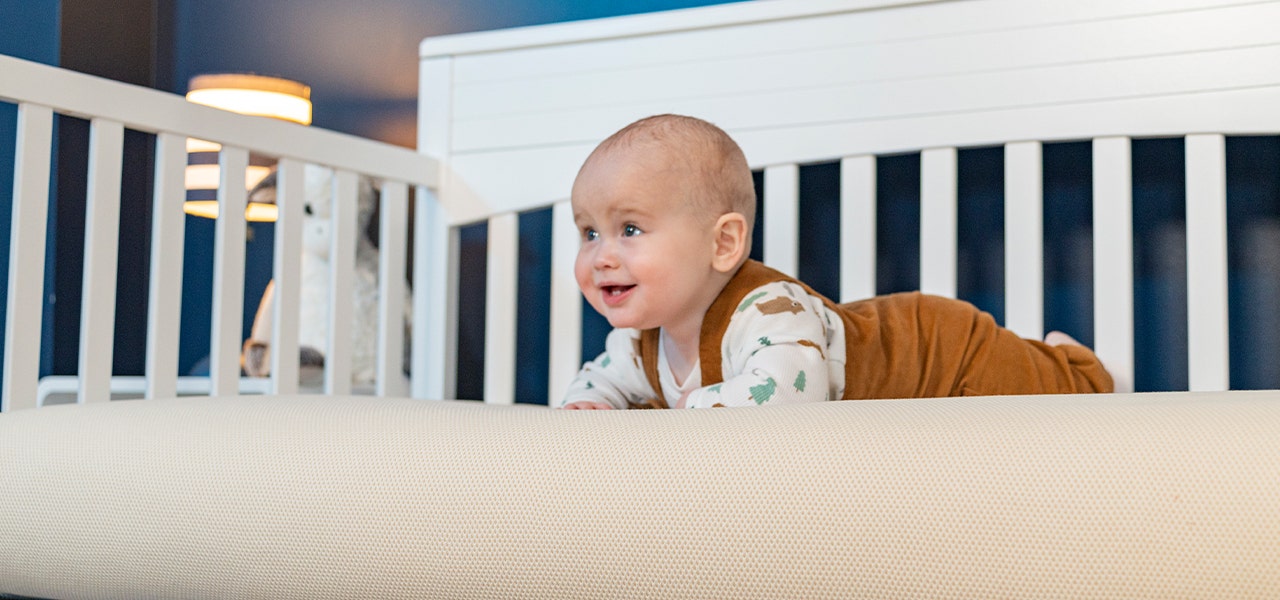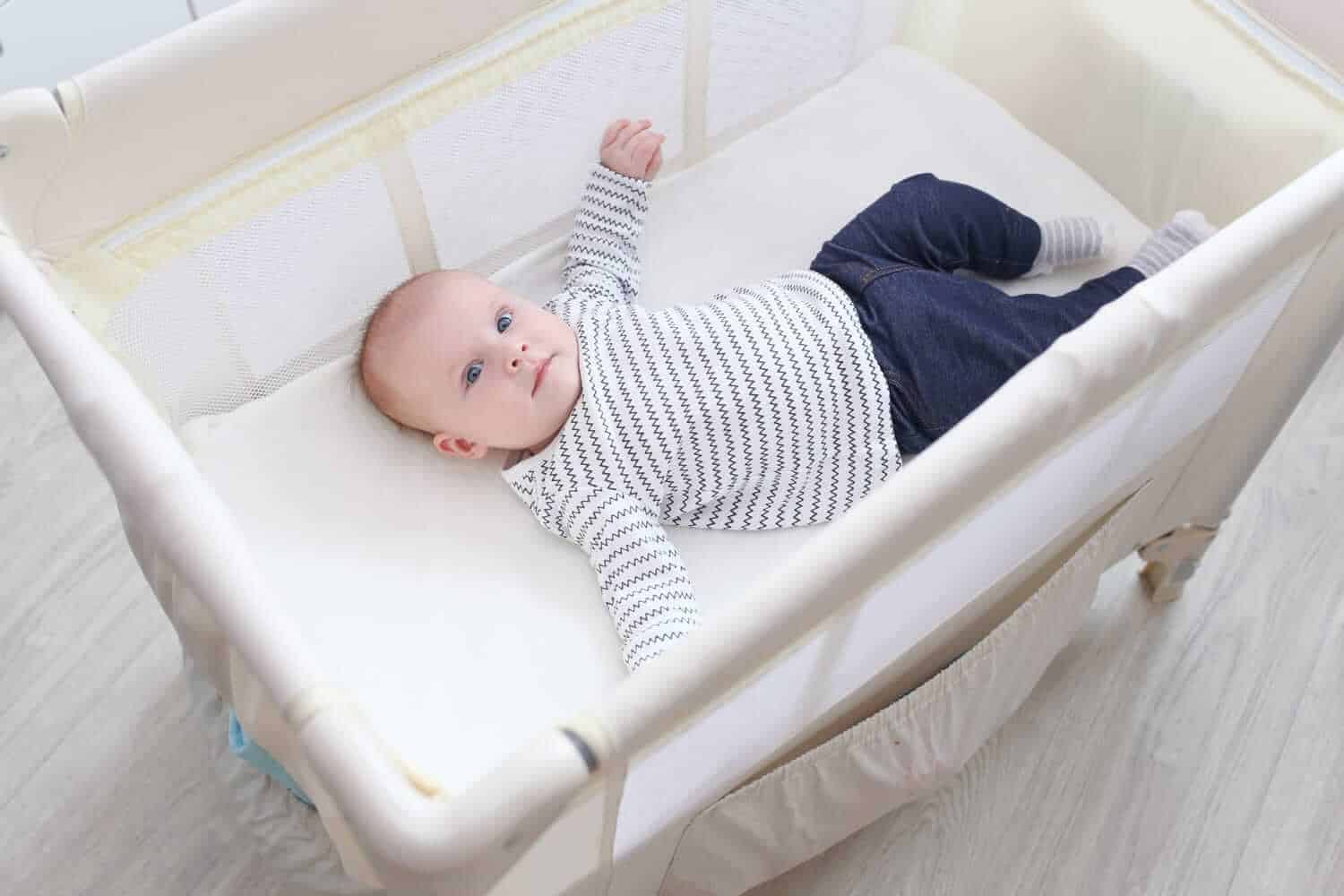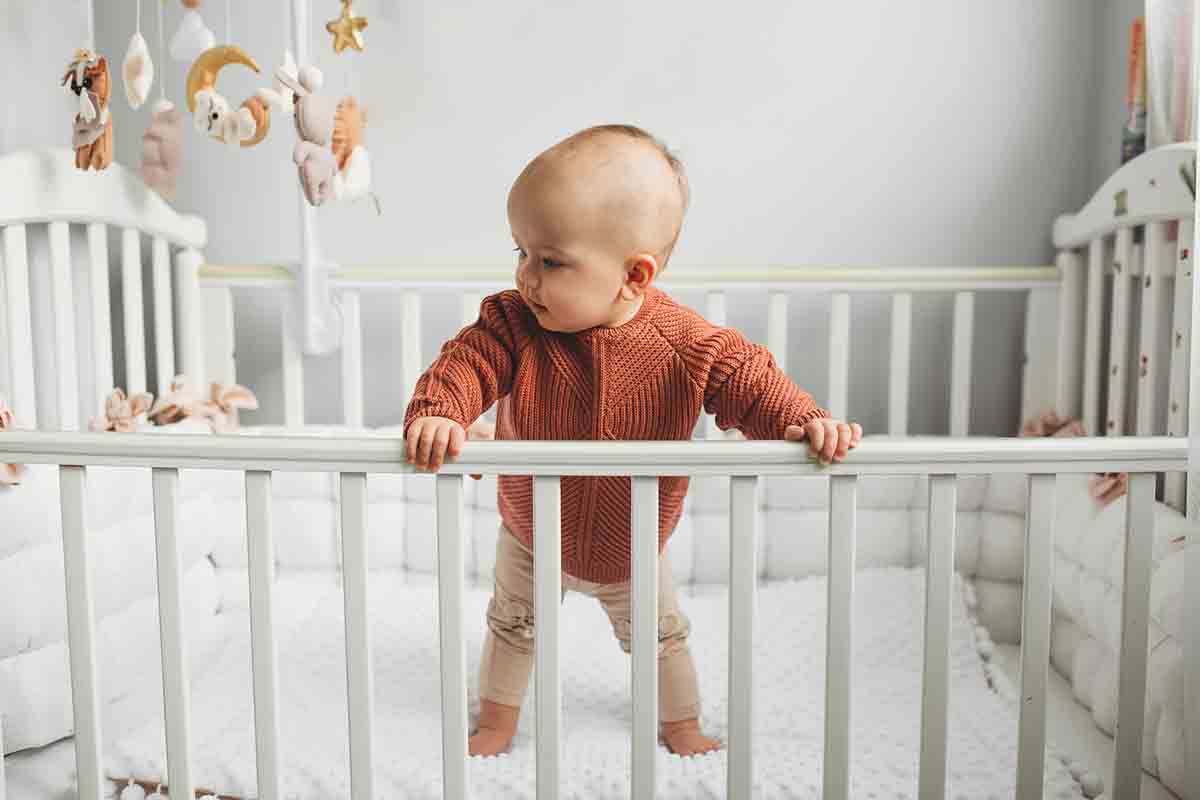Home>Furniture>Bedroom Furniture>What To Look For In A Crib Mattress
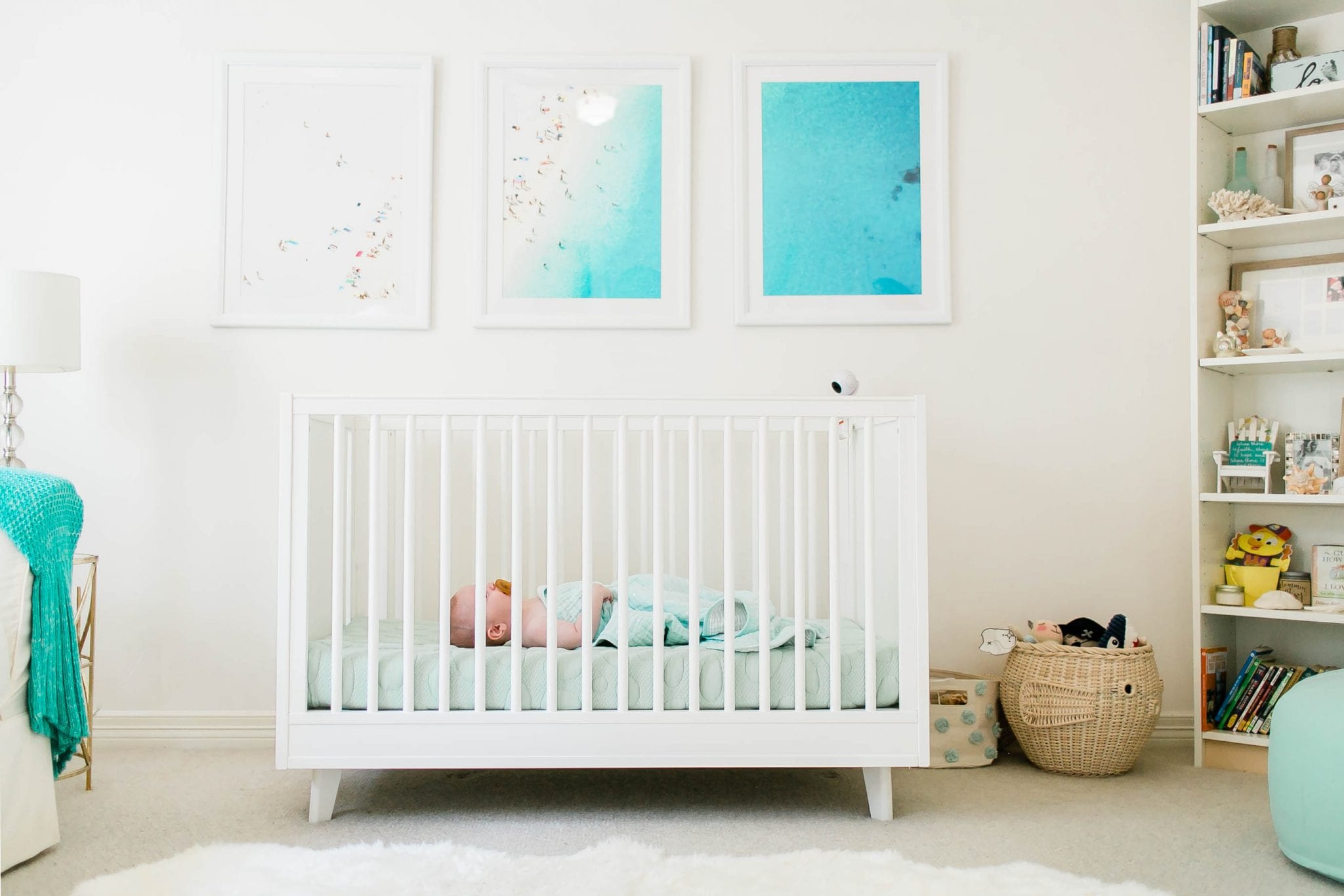

Bedroom Furniture
What To Look For In A Crib Mattress
Modified: February 25, 2024
Looking for the perfect crib mattress for your little one? Discover the essential features to consider when selecting bedroom furniture for your baby's safety and comfort.
(Many of the links in this article redirect to a specific reviewed product. Your purchase of these products through affiliate links helps to generate commission for Storables.com, at no extra cost. Learn more)
Introduction
Your baby’s safety and comfort are of utmost importance, especially when it comes to their sleep environment. As a parent, one essential item you’ll need to consider is a crib mattress. A high-quality crib mattress not only provides a supportive sleeping surface but also ensures your little one’s safety during their early years.
When choosing a crib mattress, there are several factors to consider. From safety standards and certifications to materials and durability, understanding what to look for will help you make an informed decision for your baby’s well-being.
In this article, we’ll delve into the key aspects you should consider when selecting a crib mattress. By the end, you’ll have a better understanding of what to look for to ensure a safe and comfortable sleep space for your little one.
To begin, let’s explore the importance of safety standards and certifications when choosing a crib mattress.
Key Takeaways:
- Ensure your baby’s safety and comfort by choosing a crib mattress that meets safety standards and certifications, offers firmness and support, and fits snugly in the crib. Consider breathability, durability, and your budget for a well-informed decision.
- Prioritize a crib mattress with breathable, hypoallergenic materials, waterproof covers, and durable construction. Balance safety, comfort, and longevity while considering your budget to provide the best sleep environment for your baby.
Read more: What Is A Crib Mattress Size
Safety Standards and Certifications
When it comes to crib mattresses, safety should be the number one priority. Look for mattresses that meet the safety standards set by organizations such as the Consumer Product Safety Commission (CPSC) in the United States or the equivalent regulatory bodies in your country.
One important certification to look for is the GREENGUARD Gold certification. This certification ensures that the mattress has been tested for low chemical emissions and is safe for use in a baby’s nursery. It guarantees that the mattress won’t emit harmful gases or chemicals that could potentially harm your baby’s respiratory system.
Additionally, look for mattresses that are CertiPUR-US certified. This certification ensures that the mattress is free from harmful chemicals such as formaldehyde, phthalates, and flame retardants. It also guarantees that the mattress is made with low volatile organic compound (VOC) emissions, ensuring a healthier sleep environment for your baby.
Another important safety measure is the use of fire-resistant materials. Look for mattresses that meet fire safety regulations without the use of harmful chemicals. Some mattresses use natural fibers or barriers to achieve fire resistance while maintaining a safe and non-toxic sleeping surface.
It’s worth noting that while safety certifications and standards are crucial, they are not the only factors to consider when selecting a crib mattress. The comfort and support of the mattress are equally important for your baby’s sleep quality and spinal development. Let’s explore these factors in the next section.
Firmness and Support
The firmness and support of a crib mattress are vital for the safety and proper development of your baby. Babies have developing bodies and fragile bones, so a firm mattress is necessary to provide proper support and reduce the risk of suffocation or Sudden Infant Death Syndrome (SIDS).
When considering firmness, check for mattresses that follow the guidelines set by pediatricians and child safety experts. They typically recommend a firm mattress with a minimal amount of cushioning. Press your hand onto the mattress; it should quickly regain its shape and not conform to the shape of your hand. This firmness is essential to keep your baby’s face from sinking into the mattress, reducing the risk of suffocation.
In terms of support, look for mattresses that evenly distribute your baby’s weight and contour to their body shape. A mattress with good support will help maintain proper spinal alignment and promote healthy growth. Avoid mattresses that sag or have indentations, as they can disrupt your baby’s sleep and potentially pose safety risks.
To ensure optimal support, many crib mattresses feature reinforced edges. These reinforced edges enhance the mattress’s stability and prevent it from sinking when your baby is near the edges. This feature not only provides a stable surface for your baby to sleep on but also helps prevent any potential entrapment.
Remember, while firmness and support are vital, it’s equally important to strike a balance between comfort and safety. A mattress that is too rigid might not provide enough comfort for your baby, leading to poor sleep quality. Finding the right balance is key to creating a cozy and secure sleep environment.
Size and Fit
When it comes to crib mattresses, size and fit are crucial considerations. A properly fitting mattress is essential for your baby’s safety and comfort.
First and foremost, check the dimensions of your crib to ensure that the mattress fits snugly. The standard crib size is typically 28 inches by 52 inches (71 cm by 132 cm). The mattress should fit snugly in the crib without any noticeable gaps on the sides. A gap between the mattress and the crib can pose a safety hazard, as your baby’s limbs could get trapped in the space.
In addition to fit, consider the thickness of the mattress. Most crib mattresses have a thickness of around 5 to 6 inches (13 to 15 cm), but it’s important to check the manufacturer’s specifications for the recommended thickness. Opting for a thicker mattress can provide additional support for your baby, but make sure it doesn’t exceed the height recommendations specified for your crib.
It’s worth noting that some cribs come with adjustable mattress heights. This feature allows you to lower the mattress as your baby grows and becomes more mobile. Ensure that the mattress fits securely at each height position to prevent any gaps or instability.
Another aspect to consider is the weight of the mattress. A heavier mattress can be easier to maneuver and less likely to shift or move around in the crib. This added stability can improve safety and prevent any potential hazards during your baby’s sleep.
Lastly, some crib mattresses come with a dual-sided design. This means that one side of the mattress is firmer, designed for infants, while the other side is slightly softer, suitable for toddlers. This feature allows you to use the same mattress as your baby grows, providing both safety and comfort throughout their early years.
When choosing the size and fit of a crib mattress, always refer to the manufacturer’s guidelines and recommendations. Ensure that the mattress fits securely and snugly in the crib to create a safe sleep environment for your little one.
Breathability and Temperature Regulation
Breathability and temperature regulation are essential considerations when selecting a crib mattress for your baby. These factors can greatly impact your baby’s comfort and safety during sleep.
A breathable crib mattress allows for proper air circulation, reducing the risk of overheating and ensuring a safe sleep environment. Look for mattresses that are constructed with breathable materials, such as mesh or open-cell foam. These materials promote airflow and prevent the buildup of heat and moisture, keeping your baby cool and comfortable throughout the night.
Temperature regulation is crucial, as it helps prevent your baby from becoming too hot or too cold during sleep. Look for mattresses that have thermo-regulating properties, where they can adapt to your baby’s body temperature and help maintain a comfortable sleeping temperature. Some mattresses use materials like phase-change materials or natural fibers to aid in temperature regulation.
Additionally, consider the mattress cover when evaluating breathability and temperature regulation. Opt for covers made from breathable materials that allow air to circulate freely. Some covers are also designed to wick away moisture, keeping your baby dry and comfortable throughout the night.
It’s worth mentioning that bedding and blankets should be kept to a minimum in your baby’s crib to reduce the risk of suffocation or overheating. A breathable and temperature-regulating mattress can help mitigate these risks by ensuring optimal airflow and maintaining a comfortable sleep environment.
By selecting a crib mattress that prioritizes breathability and temperature regulation, you can help ensure that your baby stays comfortable and safe during their precious sleep time. Remember to always follow the manufacturer’s recommendations for safe sleep practices and consider your baby’s individual needs when choosing a mattress.
When looking for a crib mattress, prioritize safety and comfort. Look for a firm, waterproof surface and ensure it fits snugly in the crib to prevent suffocation hazards.
Read more: What Is The Best Mattress For Baby Cribs
Waterproof and Easy-to-Clean Covers
When it comes to baby products, messes are inevitable. That’s why considering a crib mattress with a waterproof and easy-to-clean cover is essential. Not only does it protect the mattress from spills, accidents, and stains, but it also helps maintain a hygienic and odor-free sleeping environment for your baby.
A waterproof cover acts as a barrier, preventing liquids from seeping into the mattress layers and causing damage or breeding bacteria. It’s particularly useful during the potty training stage or for babies who are prone to diaper leaks. Accidents can easily be wiped away, leaving the mattress clean and dry.
Look for crib mattresses with covers that are not only waterproof but also easy to clean. Removable covers that can be machine washed are ideal. This allows you to quickly and conveniently remove any stains or spills without having to clean the entire mattress. It’s also important to ensure that the cover is durable and retains its waterproof properties even after multiple washes.
In addition to easy cleaning, consider the hypoallergenic properties of the mattress cover. Babies have sensitive skin and are prone to allergies, so choosing a mattress with a hypoallergenic cover can help reduce the risk of irritation or respiratory issues. These covers are often made from materials that repel dust mites, mold, and other allergens, promoting a healthier sleep environment for your baby.
Remember, while the waterproof and easy-to-clean cover is an important feature, make sure it doesn’t sacrifice the overall breathability and comfort of the mattress. Look for covers that strike a balance between protection and breathability to ensure your baby can sleep comfortably while staying clean and dry.
By selecting a crib mattress with a waterproof and easy-to-clean cover, you can simplify the cleaning process and maintain a hygienic sleeping environment for your little one. It’s an investment that will save you time and provide peace of mind knowing that your baby’s mattress is protected from spills and accidents.
Materials and Allergens
When choosing a crib mattress, it’s important to consider the materials used in its construction, particularly in relation to allergies and sensitivities. Opting for a mattress made from hypoallergenic and non-toxic materials can help create a safe and comfortable sleep environment for your baby.
Look for mattresses that use materials such as organic cotton, bamboo, or natural latex, as these are known to be hypoallergenic and gentle on sensitive skin. These materials are less likely to cause allergies or skin irritations, making them suitable for babies with allergies or eczema.
Avoid mattresses that contain polyurethane foam or other synthetic materials, as they may emit volatile organic compounds (VOCs) that can be harmful to your baby’s respiratory system. Instead, choose mattresses that are made with CertiPUR-US certified foam, which ensures low VOC emissions and the absence of harmful chemicals.
Additionally, consider the presence of common allergens like dust mites and mold. Dust mites, in particular, can trigger allergies and asthma symptoms in some individuals. Opt for mattresses that have features like anti-microbial treatments or covers that are resistant to dust mites and mold. These features help create a healthier sleep environment for your baby, reducing the risk of allergic reactions.
It’s also important to note that some mattresses may have a smell when initially unpackaged. This is known as off-gassing and is caused by the release of volatile chemicals from the mattress materials. To minimize exposure to these odors, choose mattresses that are made with low-odor or eco-friendly materials. It’s also recommended to air out the mattress in a well-ventilated room before placing it in the crib.
By selecting a crib mattress with hypoallergenic and non-toxic materials, you can provide a safe and comfortable sleep environment for your baby. Consider their unique needs and any allergies or sensitivities they may have when making your decision.
Durability and Longevity
When investing in a crib mattress, it’s essential to consider its durability and longevity. A mattress that withstands the test of time not only provides value for money but also ensures a comfortable and safe sleeping surface for your baby as they grow.
Look for mattresses that are made with high-quality materials and have a reputation for durability. Consider the mattress’s construction, including the density of the foam or the quality of the innerspring coils. Higher density foam and strong, durable coils are indicators of a mattress that will maintain its shape and support over time.
It’s also worth considering the mattress’s edge support. A mattress with reinforced edges will not only prevent your baby from rolling off but will also maintain its shape and firmness at the edges, even with extended use. This feature is ideal for toddlers who may frequently sit or play on the edge of the mattress.
Furthermore, take note of the mattress’s warranty. A warranty is a testament to the manufacturer’s confidence in their product’s durability. A longer warranty period can provide peace of mind and assurance that the mattress is built to last.
To ensure longevity, it’s crucial to follow the manufacturer’s guidelines for caring and maintaining the mattress. Regularly rotate the mattress and use a waterproof protector to prevent stains, moisture, and odors from seeping into the mattress. This can help prolong its lifespan and keep it in optimal condition for your baby to use throughout their crib years.
Consider how the mattress will grow with your child as well. Some crib mattresses are dual-sided, with one side being suitable for infants and the other side designed for toddlers. This feature allows you to flip the mattress as your baby transitions to a toddler bed, extending its usefulness and ensuring continued comfort and support.
By choosing a crib mattress known for its durability and longevity, you can rest assured that your investment will provide a comfortable and safe sleeping surface for your baby as they grow. Take into account the mattress’s construction, edge support, warranty, and maintenance guidelines to make an informed decision.
Price and Budget
Price and budget are important factors to consider when selecting a crib mattress. While you want to provide the best for your baby, it’s crucial to find a mattress that fits within your financial means.
Crib mattress prices can vary greatly depending on factors such as the brand, materials used, features, and certifications. Before making a purchase, set a realistic budget based on your financial situation and prioritize the essential features that are important to you and your baby.
It’s important to remember that a higher price doesn’t always guarantee a better mattress. While premium mattresses may offer additional features or luxury materials, there are also affordable options that meet safety standards and provide adequate comfort and support for your baby. Consider the value and quality that a mattress offers rather than solely relying on the price tag.
Take advantage of sales, discounts, or promotions that may be available when shopping for a crib mattress. Compare prices from different retailers and online platforms to ensure you’re getting the best deal without compromising on quality or safety.
Keep in mind that a crib mattress is an investment in your baby’s sleep and safety. It’s a product that will be used for an extended period, so it’s worth considering the long-term value rather than solely focusing on the upfront cost. A durable and high-quality mattress may come at a slightly higher price point, but it can provide better comfort, support, and longevity for your baby.
If budget constraints are a concern, consider purchasing a mattress from a reputable brand that offers good value for money. Research customer reviews and look for mattresses that have positive feedback regarding durability, comfort, and safety. It’s possible to find a reliable crib mattress within your budget that meets all the essential criteria for your baby’s well-being.
Ultimately, when considering the price and budget for a crib mattress, it’s important to strike a balance between affordability and quality. By setting a realistic budget and doing thorough research, you can find a crib mattress that provides the necessary comfort, support, and safety for your baby without breaking the bank.
Read more: How Wide Is A Crib Mattress
Conclusion
Choosing the right crib mattress for your baby is a crucial decision that affects their safety, comfort, and overall well-being. By considering the various factors discussed in this article, you can make an informed and confident choice for your little one’s sleep environment.
Begin by ensuring that the mattress meets safety standards and certifications, such as those set by the Consumer Product Safety Commission (CPSC) and the GREENGUARD Gold certification. These certifications guarantee that the mattress is free from harmful chemicals, emissions, and potential allergens.
Firmness and support are paramount in providing a safe sleep surface for your baby, so opt for a mattress that offers adequate firmness and even weight distribution. Remember to consider size and fit to ensure a snug and secure mattress that fits properly within your crib.
Breathability and temperature regulation are crucial for maintaining a comfortable and safe sleep environment. Look for mattresses with breathable materials, thermo-regulating properties, and moisture-wicking covers to prevent overheating and promote airflow.
Consider mattresses with waterproof and easy-to-clean covers to simplify maintenance and promote a hygienic sleeping environment. Look for hypoallergenic materials that repel dust mites and allergens to safeguard your baby’s health.
Durability and longevity are key factors to consider, as a crib mattress is an investment that should last throughout your baby’s crib years. Look for mattresses made with high-quality materials, reinforced edges, and consider the length of the warranty.
Lastly, factor in your budget when selecting a crib mattress. While price is important, prioritize value, quality, and safety over cost alone. Research, compare prices, and consider sales or promotions to find the best mattress within your budget.
By carefully considering these factors, you can select a crib mattress that provides a safe, comfortable, and supportive sleeping surface for your baby. Ultimately, your little one’s sleep is precious, and a high-quality crib mattress plays a vital role in their overall development and well-being.
Frequently Asked Questions about What To Look For In A Crib Mattress
Was this page helpful?
At Storables.com, we guarantee accurate and reliable information. Our content, validated by Expert Board Contributors, is crafted following stringent Editorial Policies. We're committed to providing you with well-researched, expert-backed insights for all your informational needs.
